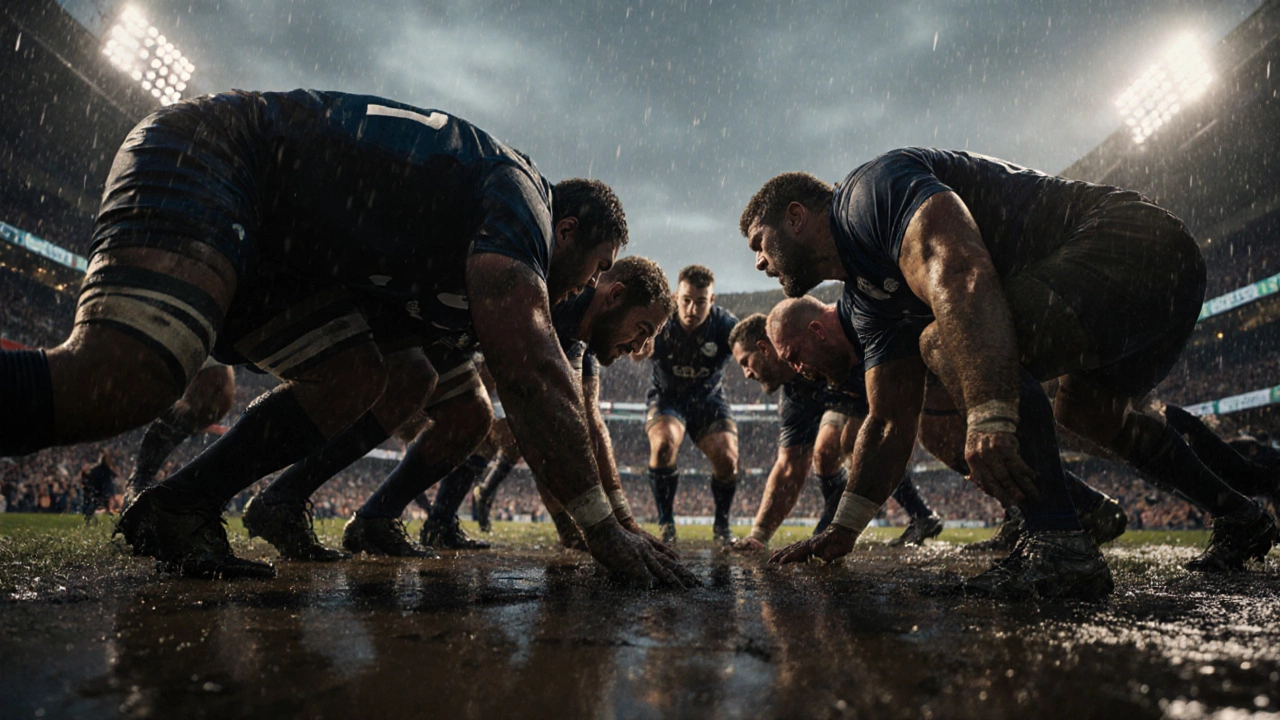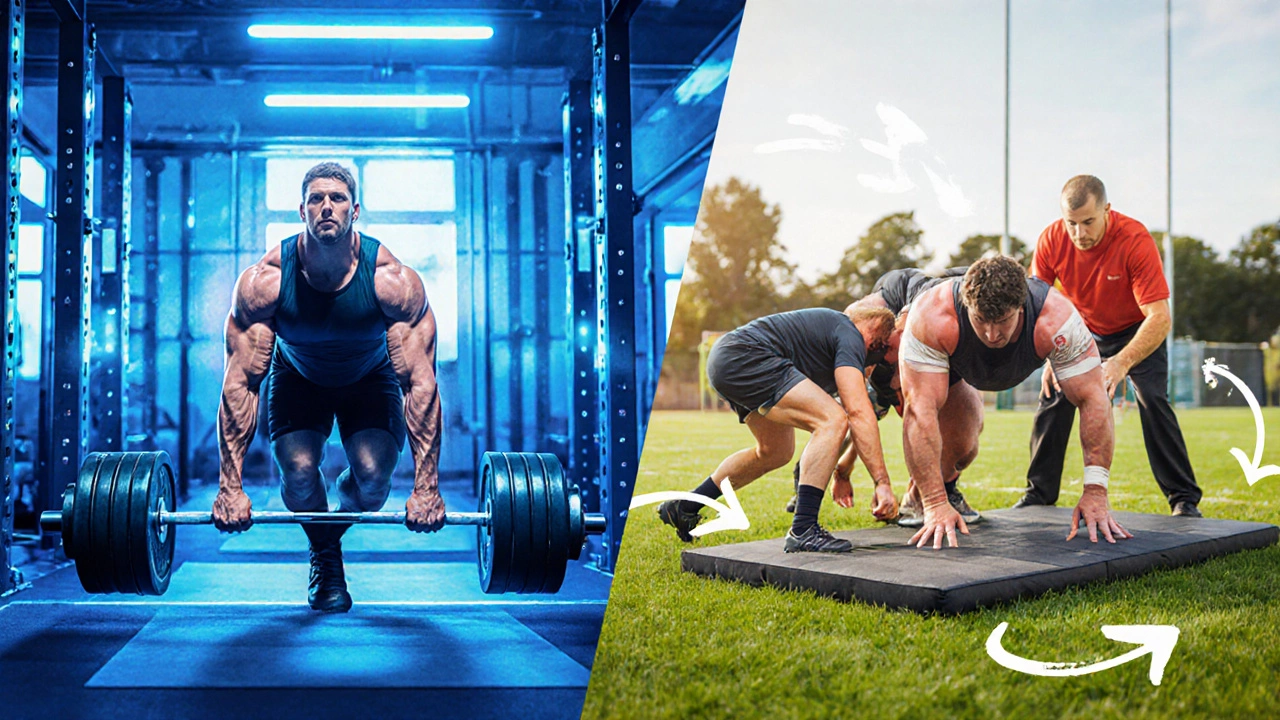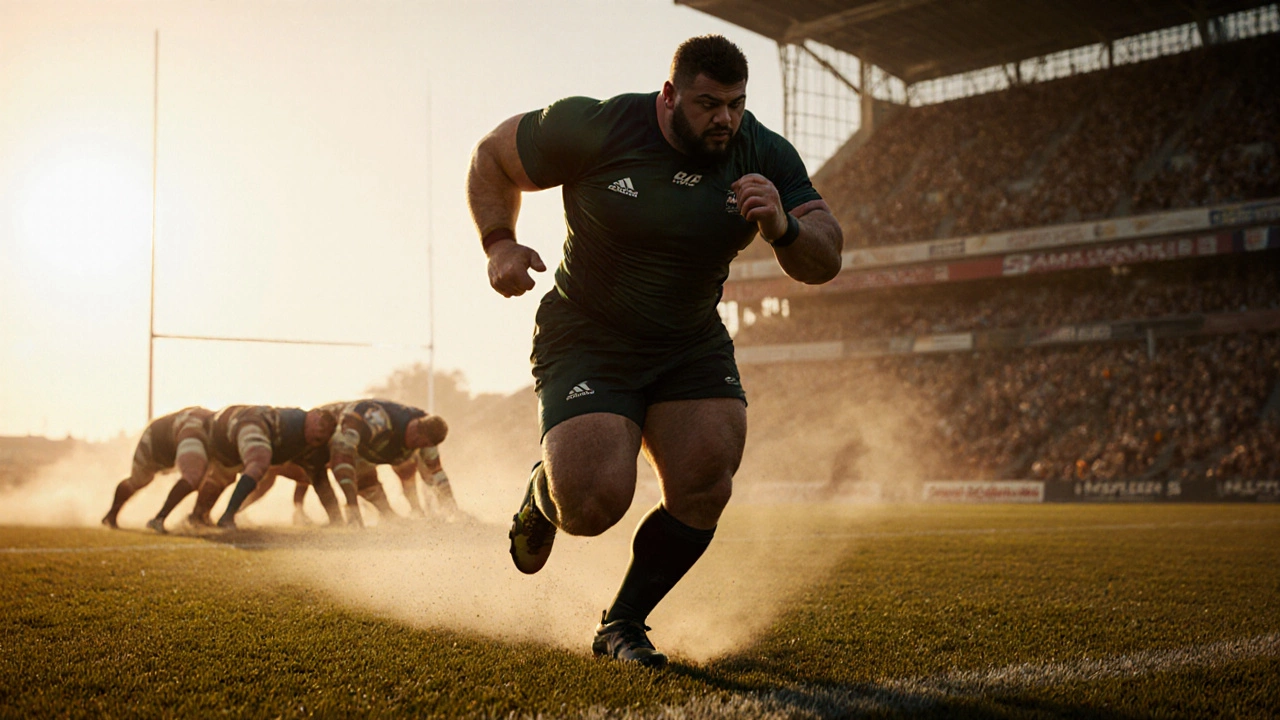Which Rugby Position Is the Toughest? - A Deep Dive
 Oct, 14 2025
Oct, 14 2025
Rugby Position Toughness Quiz
Test your knowledge of rugby position demands with this 5-question quiz. After completing, see how well you understand why the prop position is considered the toughest in rugby.
Question 1
Which position faces the highest compressive forces during scrums?
Question 2
What is the typical weight range for a prop?
Question 3
What is the primary reason props have the highest injury risk?
Question 4
What key physical demand is most associated with lock positions?
Question 5
Which position is responsible for throwing the ball in lineouts?
Ever watched a match and wondered why some players look like they’re carrying the whole game on their shoulders? The answer often lies in the position they occupy. Some roles demand raw power, others need split‑second decisions, and a few combine both while staring down constant injury risk. This article breaks down the hardest position in rugby, why it feels that way, and what it takes to survive there.
Key Takeaways
- The prop is widely regarded as the most physically demanding role.
- Front‑row positions (prop, hooker, lock) face the highest collision rates.
- Technical skill matters just as much as brute strength in the hardest spots.
- Injury risk, especially neck and shoulder issues, is highest for forwards.
- Training for the toughest role requires a balanced mix of strength, mobility, and game sense.
Understanding Rugby Union Positions
Rugby Union fields fifteen players split into forwards and backs. Forwards (numbers 1‑8) battle in scrums, lineouts, and breakdowns, while backs (numbers 9‑15) dictate the attacking flow. Each role carries its own set of responsibilities, but the intensity varies dramatically.
Physical Demands of the Forwards
Among the forwards, the front row endures the most punishing workload. Let’s meet the key players, each introduced with schema markup for clarity.
Prop is the cornerstone of the scrum’s front row, providing raw power to drive the opposition backwards. Their typical body weight ranges from 115‑130kg, and they regularly lift 200kg in the scrum.
Hooker sits between the two props and is responsible for striking the ball in scrums and throwing it in lineouts. They need a blend of strength and accuracy, often weighing 100‑110kg.
Lock (or second‑row) provides the engine room for lineout jumps and scrum pushes. Tall (2.00‑2.05m) and powerful, locks typically lift 250kg in scrums.
Flanker operates on the side of the scrum, tasked with winning turnovers and supporting ball carriers. Their work rate is among the highest, covering up to 8km per match.
Number Eight links the forwards to the backs, controlling the ball at the base of the scrum and often acting as a ball carrier. They combine size (110‑120kg) with surprising agility.
Why does the prop stand out as the hardest? First, they face the highest compressive forces during every scrum - studies show a single scrum can generate forces exceeding 16,000N. Second, props must maintain a low, stable body position for the entire 80‑minute match, placing relentless stress on the neck, shoulders, and lower back. Finally, they constantly engage in rucks and mauls, meaning repeated high‑impact collisions.

Technical and Mental Challenges Across Positions
Hardness isn’t just about muscle. The Scrum‑half runs the game from the base of the scrum, making split‑second distribution decisions under pressure. While they face fewer collisions, a single mental error can halt a team’s momentum.
The Fly‑half acts as the chief strategist, choosing whether to kick, pass, or run. Their mental load is huge, especially in tight matches where one tactical choice can decide the result.
Backline players such as the Centre, Wing, and Fullback demand top‑level speed and evasive skill. Though they face fewer repetitive collisions, a single high‑speed tackle can cause severe injuries, making mental focus critical.
Injury Risk & Longevity
Data from the International Rugby Board (2023) indicates that front‑row forwards suffer the highest concussion and neck‑injury rates - about 18% of all recorded injuries. Locks and flankers follow, while backs average roughly half that figure. The cumulative effect means a prop’s career often peaks earlier, with many retiring before age 30 unless they master recovery protocols.
Side‑by‑Side Comparison
| Position | Typical Weight (kg) | Key Physical Demand | Technical Skill Rating (1‑5) | Injury Risk (Low/Medium/High) |
|---|---|---|---|---|
| Prop | 115‑130 | Scrum force, ruck endurance | 4 | High |
| Hooker | 100‑110 | Lineout throwing, scrummaging | 3 | Medium‑High |
| Lock | 115‑125 | Lineout jumping, scrum drive | 3 | Medium‑High |
| Flanker | 105‑115 | Breakdown speed, tackling | 4 | Medium |
| Number Eight | 110‑120 | Ball carrying, scrum control | 4 | Medium |
| Scrum‑half | 80‑85 | Quick distribution, vision | 5 | Low‑Medium |
| Fly‑half | 85‑92 | Tactical kicking, decision‑making | 5 | Low‑Medium |
| Centre | 95‑105 | Running lines, defense | 4 | Medium |
| Wing | 85‑95 | Speed, finishing | 3 | Medium |
| Fullback | 90‑100 | Positional awareness, counter‑attack | 4 | Medium |

Who Thrives in the Toughest Spot?
If you picture the ideal prop, think of a player with a barrel chest, a sturdy neck, and a work ethic that never quits. But there’s more to it than size:
- Strength base: Heavy compound lifts (deadlift, squat, bench) that exceed 2× body weight.
- Neck conditioning: Specific isometric neck bridges three to four times a week to reduce concussion risk.
- Mobility drills: Hip‑openers and thoracic rotations keep scrummaging angles safe.
- Game sense: Understanding when to bind tightly vs. when to release is a skill honed by watching footage of elite props like Owen Franks or Tadhg Furlong.
For players aspiring to transition into this role, a typical 12‑week block looks like:
- Weeks1‑4: Build max strength (5‑6sessions/week).
- Weeks5‑8: Add explosive power (cleans, snatches) and start neck isometrics.
- Weeks9‑12: Introduce match‑specific scrummaging drills, reduce gym volume, increase on‑field reps.
Recovery is non‑negotiable. Cold‑water immersion, regular physiotherapy, and a protein intake of 2.2g/kg help keep the joints lubricated and the muscles repairing.
Common Misconceptions About the Hardest Position
Many fans assume the “hardest” spot is the one that scores the most tries, but try‑scoring is largely a function of speed and space, not raw hardship. Conversely, the prop’s unglamorous work-holding the scrum, clearing the ruck-often goes unnoticed by casual viewers, even though it decides whether a team can retain possession.
Another myth is that only the biggest players can be props. Modern elite props combine size with surprising agility; look at South Africa’s Steven Kitshoff, who can sprint 30m in under 4seconds while still dominating the scrum.
Bottom Line: The Prop Takes the Crown
When you stack up physical strain, technical requirement, injury exposure, and mental stamina, the hardest rugby position consistently points to the prop. It’s a role that asks for a perfect storm of raw power, flawless technique, and relentless resilience. If you love the gritty, under‑the‑radar work that keeps a team alive, aiming for the front row might just be your rugby destiny.
Frequently Asked Questions
What makes the prop position more demanding than other roles?
Props face the highest compressive forces in every scrum, often exceeding 16,000N. They must maintain a low, stable body position for the whole match, leading to constant neck, shoulder, and lower‑back stress. In addition, they are involved in most rucks and mauls, meaning repetitive high‑impact collisions that increase injury risk.
Can a smaller player become an effective prop?
While size gives an advantage, modern coaching emphasizes technique and explosiveness. A player who can generate high force per kilogram and has superb scrummaging fundamentals can compete, especially at club level. However, at elite tiers, most props weigh between 115‑130kg.
How much training time should a prop allocate to neck conditioning?
Most elite squads schedule neck isometrics three to four sessions per week, each lasting about 15‑20minutes. The focus is on front‑to‑back, side‑to‑side, and rotational holds using weighted bands or manual resistance.
Do backs ever face the same injury risk as forwards?
Backs have lower overall collision counts, but high‑speed tackles can cause concussions and ligament tears. Their injury profile leans more toward hamstring strains and ankle sprains, while forwards battle more neck and shoulder issues.
What career length can a prop expect compared to a back?
Due to the cumulative wear on the spine and shoulders, many props retire before 30years of age, especially at professional levels. Backs, who endure fewer repetitive collisions, often play into their mid‑30s if they manage speed‑related injuries well.